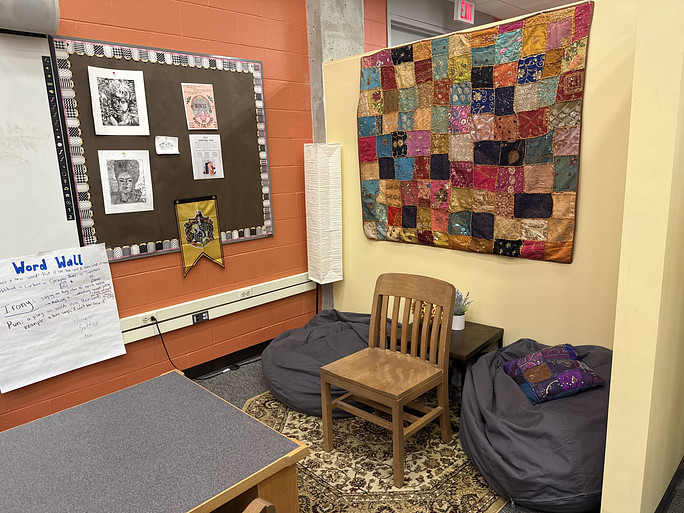By NICK BRAMANTE
Amongst all the other forms of combat taking place in Syria, there is one kind of weapon that brought the attention of the rest of the world. This weapon is something known as Sarin Gas, a chemical weapon composed of oxygen, carbon, phosphorus, hydrogen, and fluorine. When separated, these elements are generally harmless, and some even help to create life, like oxygen and hydrogen. When mixed in very specific quantities, however, they create a deadly gas that falls under the category of chemical warfare. For some people who do not know much about chemical warfare, the main question may be “Why is this important?” Well to understand why this weapon has turned so many heads both in the world and the United Nations, you have to understand it’s complications, and it’s very serious impact.
Theuse of chemical weapons in general began in the early 1900’s, more specifically at the start of World War I, in 1914. The weapons used then, though not as advanced as today’s chemical arsenal, were still able to amount to nearly 100,000 deaths throughout the course of WWI. Various poisonous gases such as mustard gas (which often left intense burns on the skin), and chlorine gas, were used, and since then the world has been able to bear witness to the devastating effects of chemical weapons. Since WWI, chemical weapons have been responsible for more than 1 million deaths globally. Nearly as soon as they were created, chemical weapons were met with much opposition from public eye.
Considered immoral, it was very apparent these weapons killed in mass quantities, and without discrimination. Because of this, chemical weapons are considered Weapons of Mass Destruction, the same weapon category that holds nuclear atom bombs. All of these variables considered, the UN put a ban on chemical weaponry, under the Geneva Protocol. Although this agreement banned the use of any and all chemical weapons, it did not stop the production or stockpiling of said weapons. Because of this, the Chemical Weapons Convention (CWC) was adopted by the Conference on Disarmament in Geneva on September 3rd in 1992. This called for the disarmament of any and all chemical weapons, that a nation may possess. So, it is no surprise now that when the usage of chemical weapons was detected in Syria, it turned more than a few heads.
The Sarin Gas itself, is a very deadly compound of very common elements. It is a nerve agent, meaning it attacks the nervous system of a person. To understand the effects of the gas, you have to look at a normal human body. Whenever your brain tells your muscles to flex, a substance known as acetylcholine floods your muscle cells, and tells them to move. In order to relax your muscles, an enzyme called acetylcholinesterase breaks down the acetylcholine, and allows your muscles to stop contracting. This process occurs literally every time a muscle anywhere in your body is moved. The nerve agent Sarin is so deadly, because it bonds with the acetylcholinesterase, rendering it useless. This means that the muscles in the body are never able to relax, and flex continuously, causing excruciating pain.
If enough of the nerve agent makes it into the bloodstream it cramps the diaphragm, preventing a person from properly breathing, which eventually leads to suffocation. This gas is colorless, odorless, and evaporates very quickly enabling it to just as quickly enter the body. It kills everything, while leaving infrastructure completely untouched, earning the gas the nickname the “poor man’s neutron bomb.” The one positive aspect of the agent, is that victims who actually survive Sarin attacks are usually able to make a full recovery as it does not leave scars to tissue or permanent damage like other chemical weapons. Antidotes are available for use after Sarin attacks, although it’s very inefficient as it must be used immediately after exposure.
For a short time after the attack, it seemed the UN was split on deciding action on what to do on the Syria issue. Some believed that direct force should be used, others agreed to a more peaceful solution. The US specifically, backed by a coalition of other countries, suggested a resolution that used military force to rid the word of the weapons, but as one of the world’s biggest powers, Russia, ultimately vetoed. Eventually the UN was able to come to an agreement, and drafted/adopted a resolution that plans to rid Syria of all chemical weapons by mid-2014. The decision was unanimous, and so all the UN is backing up the idea to rid of these WMD’s. US Secretary of State John Kerry said the UN showed that “diplomacy can be so powerful that it can peacefully defuse the worst weapons of war”. This resolution requires that all of Syria cooperate, and that all stockpiles must be abandoned and given full access to experts to disarm. In short, the UN is now working at peacefully settling conflict on Syrian soil.




